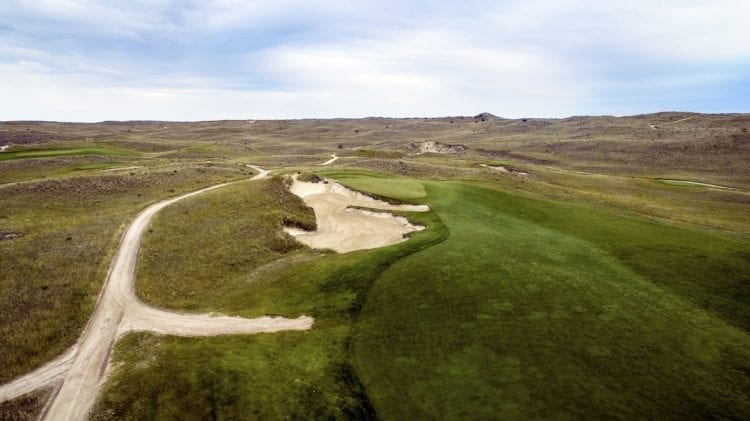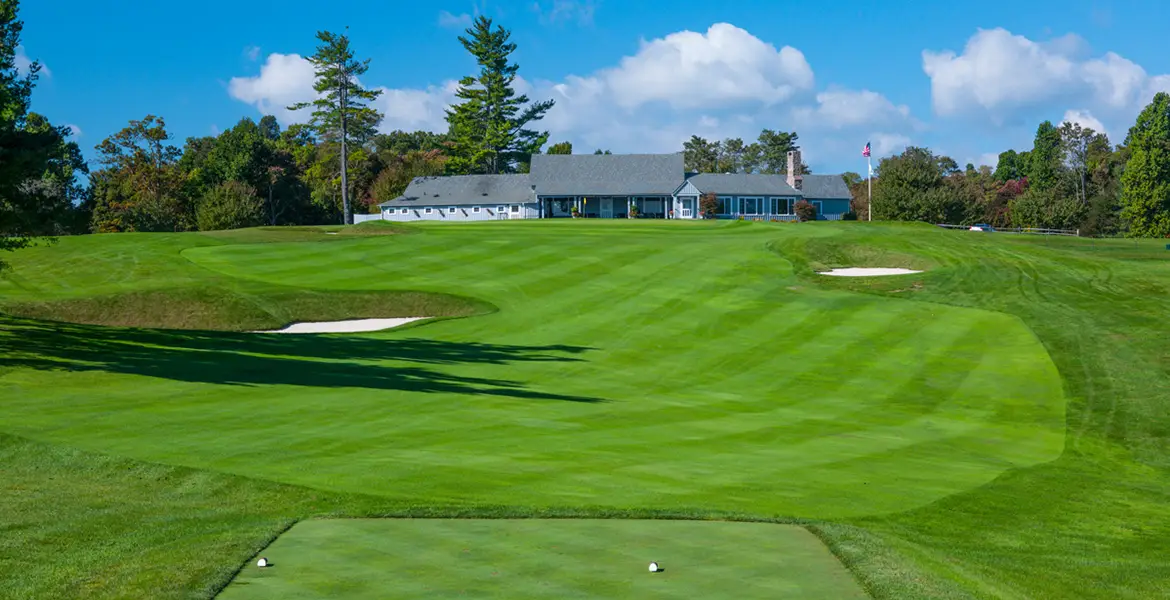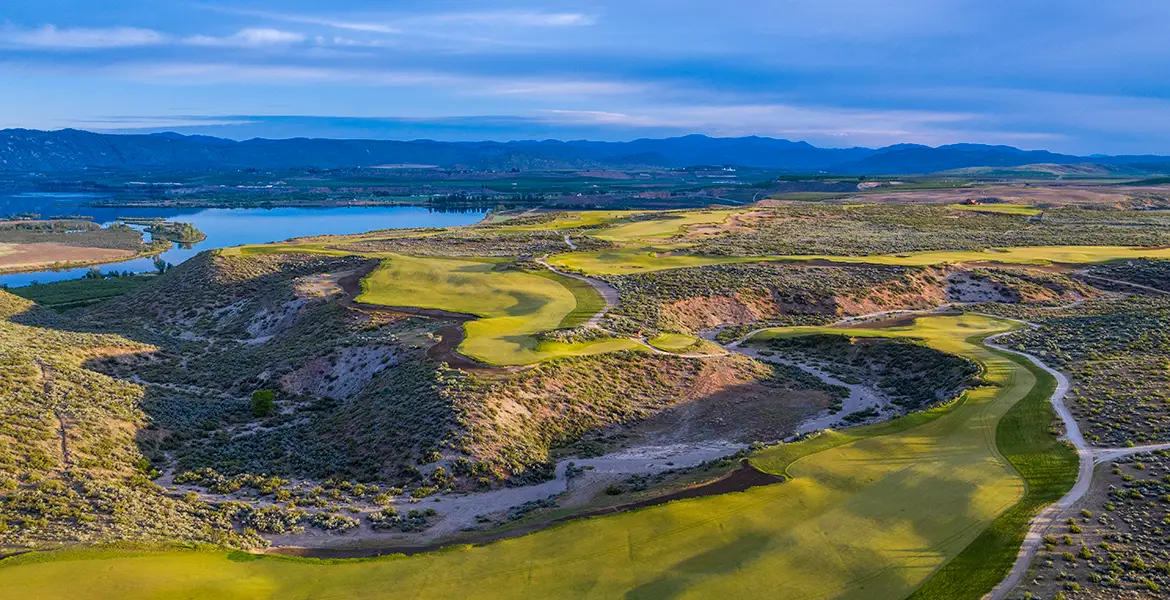Just imagine a golf world without gems such as Sand Hills, Bandon Trails, Cabot Cliffs, Friar’s Head, and Streamsong Resort’s Red Course.
Such a scenario might have been reality if it wasn’t for the success of the Kapalua Resort’s Plantation Course in Hawaii, which shut down in February 2019 for a nine-month renovation costing upwards of $11 million.

When it opened on a former pineapple field on the side of a Maui mountainside in 1991, the Plantation Course was the design debut from the all-star team of Bill Coore and Ben Crenshaw. But things weren’t always smooth sailing for the duo, who received this year’s Don A. Rossi Award from the Golf Course Builders Association of America in recognition of their significant contributions to the golf industry.
The first four course projects undertaken by Coore & Crenshaw Inc.—founded in 1986—were all shut down for various reasons, primarily the savings and loan crisis in the late 1980’s and early 1990’s. Some within the industry joked that they had started a business and immediately retired.
“There were certainly soul-searching moments as to whether this would ever work,” Coore says in an interview as we look out toward the Plantation Course’s first fairway and, further in the distance, the Pacific Ocean and neighboring island of Molokai. “It just seemed like a cascade of things.”
While the Coore & Crenshaw Cliffside Course at the Barton Creek Resort & Spa also opened in 1991, it was Maui’s Plantation Course that thrust the designers into the public eye. Today, Kapalua hosts the PGA Tour’s winners-only Tournament of Champions every January.
In 1995, Coore and Crenshaw helped usher in the era of minimalist design with the opening of Sand Hills in central Nebraska, where only 4,000 cubic yards of earth were moved in building one of the game’s most highly-rated modern courses.

The growing list of Coore & Crenshaw courses is further dotted with standouts, among them: Austin Golf Club (2001), Bandon Trails (2005), Bandon Preserve (2012), Cabot Cliffs (2016), Chechessee Creek Club (2000), The Dormie Club (2011), The Golf Club at Cuscowilla (1996), Friar’s Head (2002), Hidden Creek (2002), Lost Farm at Barnbougle Dunes (2011), Old Sandwich (2004), Ozarks National (2017), Shanqin Bay (2012), Sand Valley (2017), Sheep Ranch (2020), Streamsong Red (2013), Trinity Forest (2016), and We-Ko-Pa’s Saguaro Course (2005).
And to think that they once doubted whether it was a viable business.
That will happen when your first project—initially planned where Tiger Woods has built Bluejack National outside Houston—was shut down after 11 holes were roughed in and ready for irrigation. Coore & Crenshaw also made similar headway on course projects in Austin, Baltimore, and Denver that were halted. The one in Colorado was scuttled because of a leveraged buyout of the corporation behind the project. Years later, Bill and Ben would build the Colorado Golf Club in the same area.
“I’m trying to picture what golf would be like if Coore & Crenshaw was never around,” says Keith Rhebb, a design associate for the team. “I think back to Sand Hills; if that course doesn’t happen, does Mike Keiser take the risk to go to Bandon? If that didn’t happen, would he go to Cabot? Would he go to Australia? So, there’s a lot of these really cool golf courses built in the last 10 years that wouldn’t have been built if Coore & Crenshaw didn’t stick it out, eventually complete Sand Hills, create a model for destination golf and then take it to the public realm.”

Rhebb also points to the growing family tree they’ve created in the industry. Rhebb could run a bulldozer when he joined the Coore & Crenshaw team, but he didn’t have a background in golf course building or design.
“I’ve learned so many things from those guys and now I’ve been able to actually implement it at Winter Park,” adds Rhebb, referring to the popular Orlando 9-hole layout he built with Riley Johns. “I would be nowhere without Bill and Ben and their ability to teach and build really cool golf courses.”
And Coore & Crenshaw Inc. might not be where it is today if it wasn’t for the Plantation Course.
It’s now been about three decades since Crenshaw, who married his wife Julie at the old Kapalua Bay hotel, first called Coore and told him about the property that many of us view wistfully on TV each January. Crenshaw had gone up to the site at sunset one evening with Mark Rolfing (the broadcaster and Maui resident was once Kapalua’s director of marketing) and described a perfect golf site that rises gently from the sea. A week later, Coore was standing in that exact area—now the first tee, instead of rugged hills and pineapple fields. It’s the same spot in which he stood while detailing the upcoming work on the course that helped change the Coore-Crenshaw fortunes.
“I’m looking down the hill where the pineapple fields are,” Coore tells me with a smile and shake of his head. “Then I looked at Mark and said, ‘How many Coronas did you guys have up here for this to become ‘gently rising from the sea?’”
____________________________
What is your favorite Coore & Crenshaw design? Tell us in the comments below!






